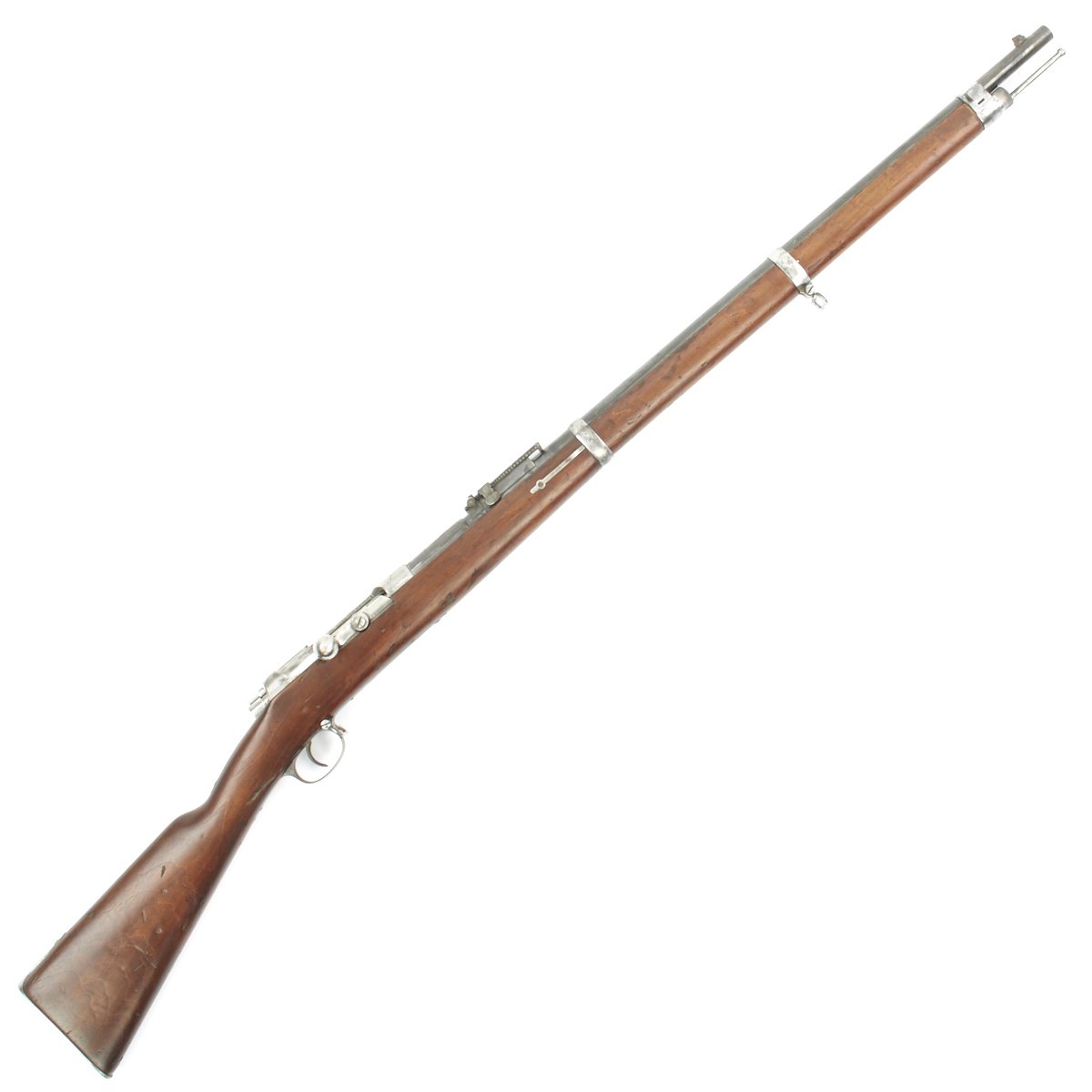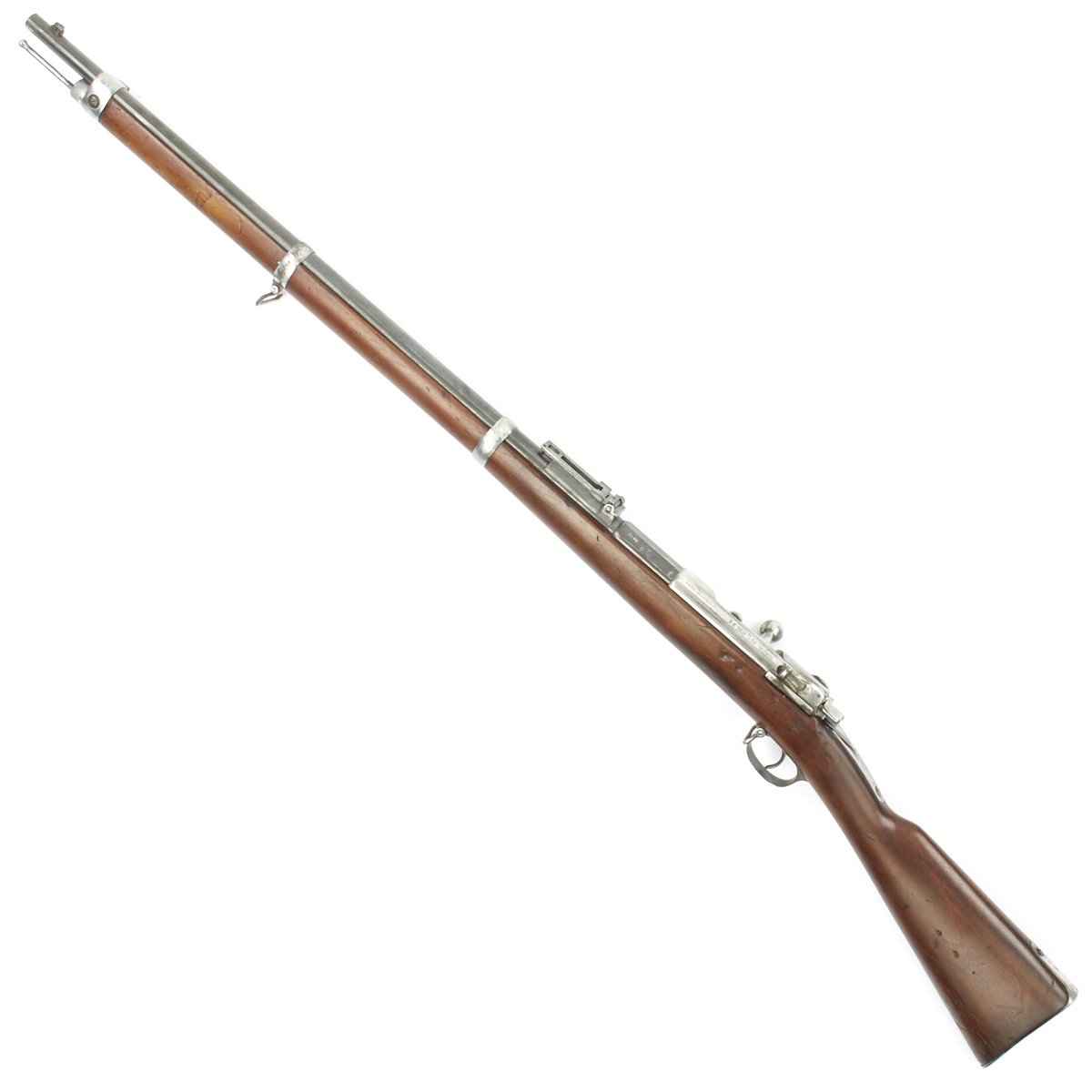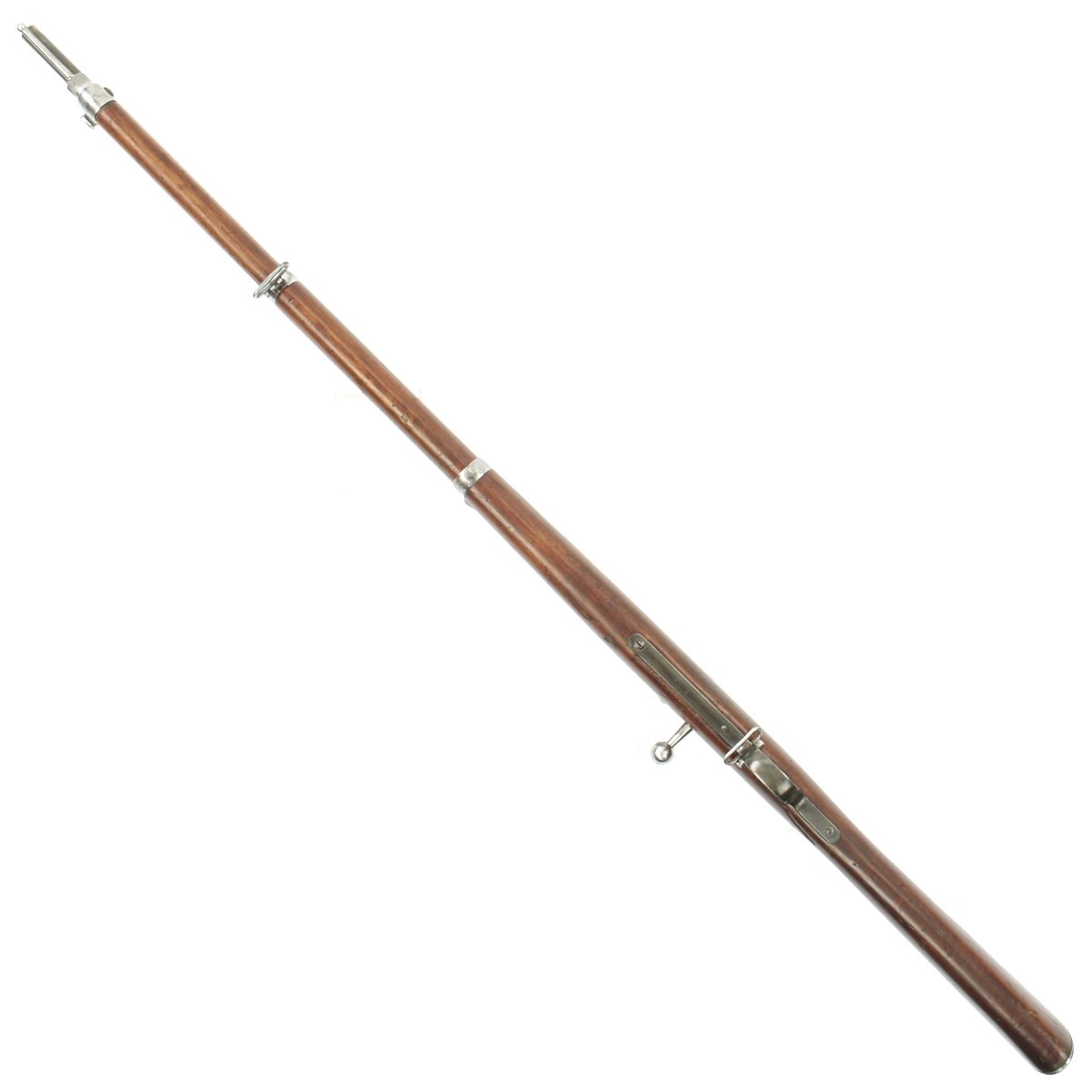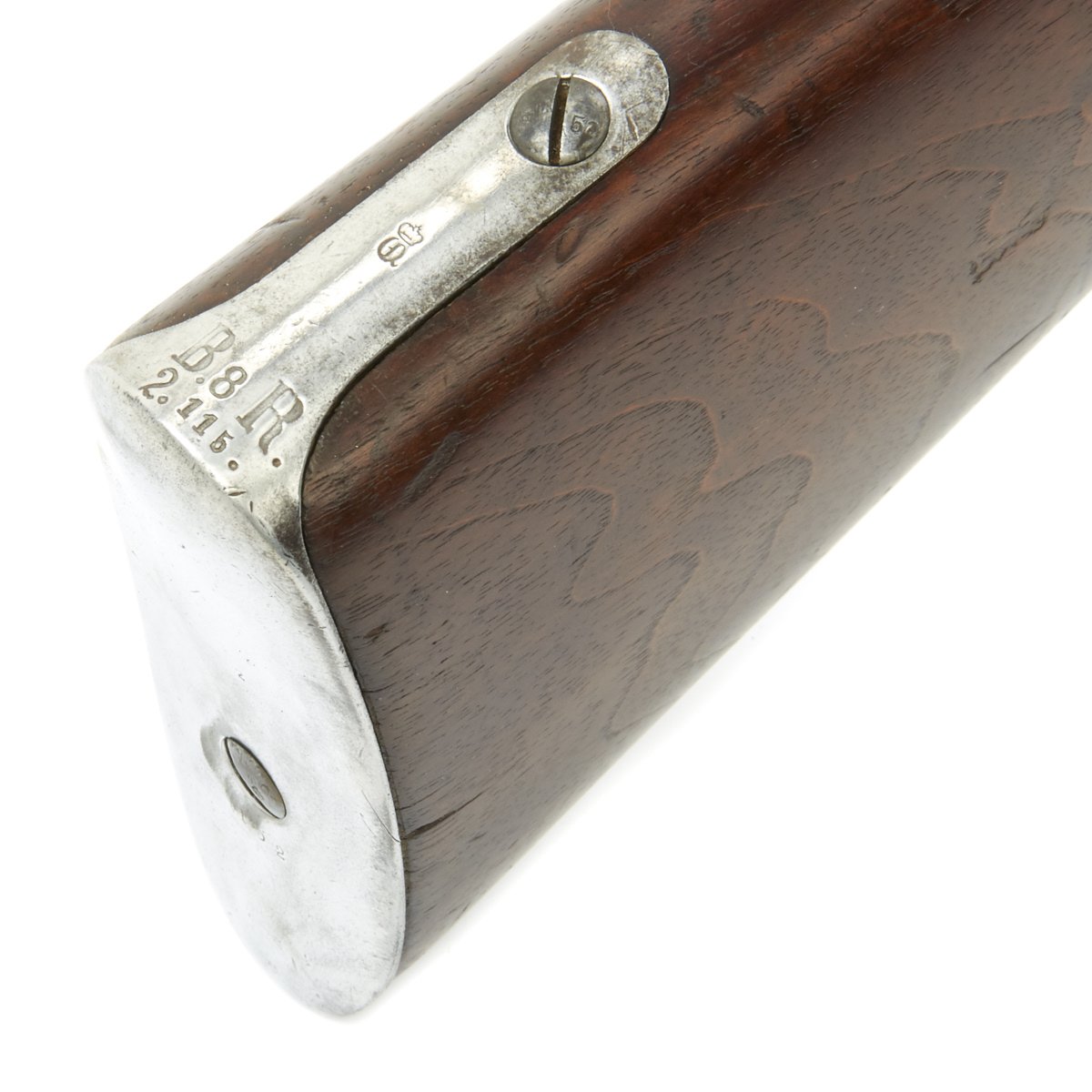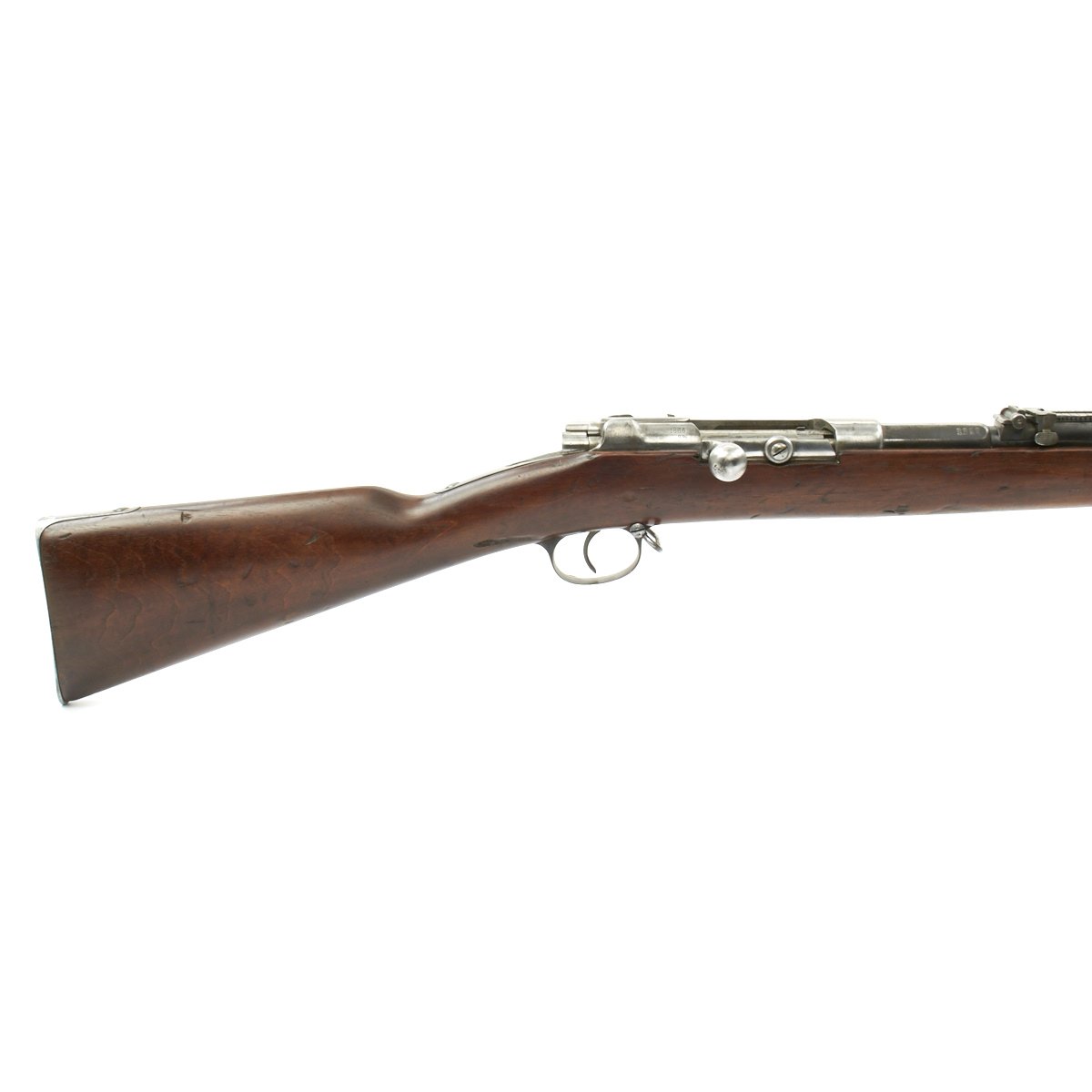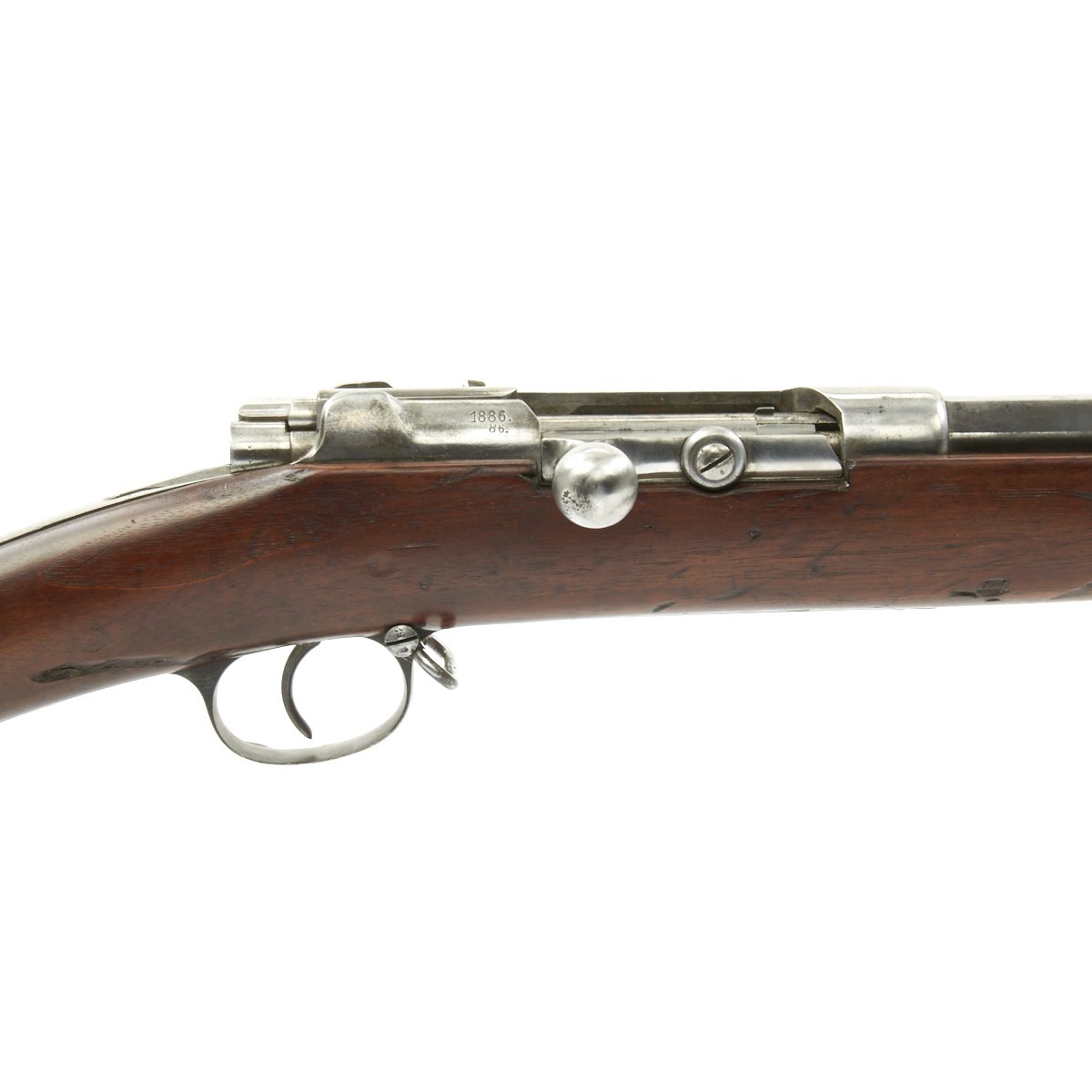Original German Mauser Model 1871/84 Magazine Rifle by Amberg Arsenal Dated 1886 – Serial No 1152 Original Items
$ 949,95 $ 237,49
Original Item: Only One Available. This is a nice example of the Mauser Model 1871/84 rifle, which is covered with Imperial German and Bavarian inspection and acceptance markings on the metal work, though they are a bit worn in places. The serial number 1152 appears on the barrel, butt plate, and receiver, while the barrel bands, butt plate, and many screws and other parts have shortened number 52. The bolt has serial number 7601 and other numbers on the components. It was common in most countries for obsolete long arms to be refurbished are arsenal for use by reserve and home guards.
The receiver is dated 1886. and marked I. G. Mod. 71/84. on the opposite side. The rifle is complete with all major parts intact and functional, and in good condition. The exterior metal finish is blued on the barrel, and bright on other components of the rifle. The markings are still crisp on the metalwork, so this rifle does not appear to have had the metal refinished or subjected to major cleaning, and is quite attractive. The wood stock is good condition, with a great color and some nice curl, with the expected dents and dings of long service. It definitely has been sanded down a bit, resulting in the proofs being hard to read.
The bore is in excellent condition, with crisp lands and grooves, and a bright finish. The top of the chamber is marked (Crown) over Amberg, for the Bavarian (and later Imperial) arsenal in Amberg, in the Kingdom of Bavaria. Below this is the Crown over L proof for King Ludwig II of Bavaria, who reigned from 1864–1886. The butt plate still has the original REGIMENTAL MARKINGS, with B.8 R. / 2. 115., for the 8th Royal Bavarian Infantry “Grand Duke Frederick II of Baden” Regiment, 2nd company, Weapon 115. From what we can see, this is the only regimental marking that this weapon was marked with.
This gun is most likely a WW1 Veteran’s “bring back” souvenir. Great quantities of these 71/84 Rifles were pressed into service in WW1 since great piles of them had been put into storage in 1888 with the introduction of the M-1888 7.92mm German Commission Rifle. The action works well, as does the magazine cutoff and feed mechanism.
Fully cleaned and ready to display!
Originally adopted as the Gewehr 71 or Infanterie-Gewehr 71, or “Infantry Rifle 71 (“I.G.Mod.71” was stamped on the rifles themselves) this was the first rifle model in a distinguished line designed and manufactured by Paul Mauser and Wilhelm Mauser of the Mauser company, and later mass-produced at Spandau arsenal.
Paul Mauser developed his bolt-action rifle from 1866 to 1871. During 1870-71 trials with many different rifles took place, with the “M1869 Bavarian Werder” being the Mausers’ chief competitor. The Mauser was provisionally adopted on 2 December 1871, pending the development of an appropriate safety. With support from the government’s Spandau arsenal, the improvements to the safety mechanism were completed and the rifle was formally accepted on 14 February 1872 as Infantry Rifle Model 1871 by the German Empire excluding Bavaria. The action was not based on its predecessor, the Dreyse needle gun which had seen service during the Franco-Prussian War of 1870-71, and which was found to have a number of weaknesses.
The now well known Mauser “wing” type safety lever was developed for the Gewehr 71. The Gewehr 71 is a conventional looking bolt action chambered in 11mm using black powder cartridges. The action included only a bolt guide rib as its single locking lug, locking forward of the receiving bridge. The original design was a single-shot. The design was updated in 1884 with an 8-round tubular magazine designed by Alfred von Kropatschek, making this Germany’s first repeating rifle. This version was designated the Gewehr 1871/84. A version of this repeater was adopted by the Ottoman Empire. Designated the M1887, it differentiated from the M71/84 in that it had a side mounted cleaning rod, a second locking lug on the rear of the bolt, and it was in caliber 9.5×60mmR, which Paul Mauser touted as the most efficient (black powder) cartridge. In the early 20th century a few were converted to 7.65×53mm smokeless by the arsenal in Ankara.
Offered in excellent collectible condition, with a rare and desirable unit marking.
Specifications-
Year of Manufacture: 1886
Caliber: 11x60mmR Mauser
Cartridge Type: Centerfire Cartridge
Barrel Length: 32 inches
Overall Length: 51 Inches
Action type: Bolt-Action
Feed System: 8 Round Tubular Magazine
NOTE: International orders of antique firearms MUST be shipped using UPS WW Services (courier). USPS Priority Mail international will not accept these.
Fast Shipping with Professional Packaging
Thanks to our longstanding association with UPS FedEx DHL, and other major international carriers, we are able to provide a range of shipping options. Our warehouse staff is expertly trained and will wrap your products according to our exact and precise specifications. Prior to shipping, your goods will be thoroughly examined and securely secured. We ship to thousands clients each day across multiple countries. This shows how we're dedicated to be the largest retailer on the internet. Warehouses and distribution centres can be located throughout Europe as well as the USA.
Note: Orders with more than one item will be assigned a processing date depending on the item.
Before shipping before shipping, we'll conduct a thorough inspection of the items you have ordered. Today, the majority of orders will be delivered within 48 hours. The delivery time will be between 3-7 days.
Returns
The stock is dynamic and we cannot completely manage it because multiple stakeholders are involved, including our factory and warehouse. So the actual stock may alter at any time. It's possible that you may not receive your order once the order has been made.
Our policy is valid for a period of 30 days. If you don't receive the product within 30 days, we are not able to issue a refund or an exchange.
You can only return an item if it is unused and in the same state as the day you received it. You must have the item in its original packaging.
Related products
Uncategorized
Uncategorized
Uncategorized
Uncategorized
Uncategorized
Uncategorized
Uncategorized
Uncategorized
Uncategorized
Band of Brothers ORIGINAL GERMAN WWII Le. F.H. 18 10.5cm ARTILLERY PIECE Original Items
Uncategorized
Uncategorized
Uncategorized
Uncategorized
Armoured Fighting Vehicles of the World: AFVs of World War One (Hardcover Book) New Made Items
Uncategorized
Uncategorized
Uncategorized
Uncategorized
Uncategorized
Uncategorized
